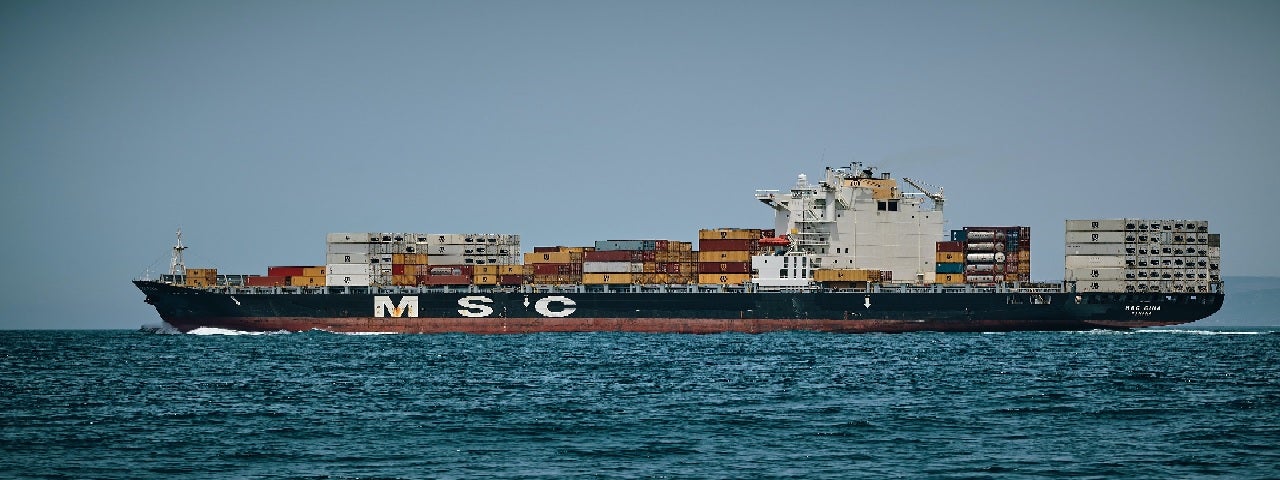
Liquefied natural gas (LNG) and hydrogen have been named as frontrunner fuels that could help the shipping industry meet IMO decarbonisation ambitions, a new survey by ABS suggests.
In the ABS Future Fuels LinkedIn Survey, 47% of the respondents mentioned LNG as the solution to the 2050 emissions target while 40% selected hydrogen.
Only 8% of the stakeholders opted for ammonia as the future fuel and 5% mentioned methanol.
For the 2030 industry targets, LNG was chosen by 64% of the respondents as the dominant fuel option.
Approximately 22% of the respondents said they believe hydrogen could be the option while 7% each considered ammonia and methanol.
The results demonstrate the challenges faced by the shipowners in developing fleets that meet and exceed IMO targets, ABS noted.
How well do you really know your competitors?
Access the most comprehensive Company Profiles on the market, powered by GlobalData. Save hours of research. Gain competitive edge.

Thank you!
Your download email will arrive shortly
Not ready to buy yet? Download a free sample
We are confident about the unique quality of our Company Profiles. However, we want you to make the most beneficial decision for your business, so we offer a free sample that you can download by submitting the below form
By GlobalDataABS chairman, president and CEO Christopher Wiernicki said: “Owners of internationally trading ships are facing increasingly complex investment decisions as they try to navigate the most efficient course to the low-carbon future, which is why ABS has moved to simplify the landscape by identifying three fuel pathways potentially open to shipping.”
The first pathway identified by ABS is called ‘Light Gas’. It uses generally light, small molecule fuels with high energy content but more demanding, mainly cryogenic fuel supply systems and storage.
The group includes a relatively mature methane solution, leading towards bio-derived or synthetic methane, and ultimately, to hydrogen as fuel.
LNG can reduce greenhouse gas (GHG) emissions by approximately 20%. Bio-methane can be carbon neutral while hydrogen is a zero-carbon fuel.
While Hydrogen is viewed as an optimal solution, it requires major technical advances to put it into practice. Wiernicki said it may even take a decade or more.
The second pathway is defined as ‘Heavy Gas’. It includes the use of generally heavier, more complex molecules but with less demanding fuel supply and storage requirements than the light gas pathway.
The group includes liquefied petroleum gas (LPG), methanol and ethanol, leading to bio-derived or synthetic LPG / methanol, and ultimately, to ammonia.
The third pathway uses bio / synthetic fuels that are derived from renewable sources and can produce liquid fuels.
The fuels have similar properties to diesel oil and can be used with minimal changes to current ship designs.
Wiernicki said: “In the future, the third generation of biofuels such as lignocellulosic or algae-based fuels could potentially provide the industry with almost 500 million tonnes of fuels annually, more than the current annual bunker demand.
“This group includes electro / synthetic gas-to-liquid (GTL) fuels produced through either carbon capture and electrolysis, or from converting biomass to syngas and then to liquid fuels such as methanol or diesel.”
He also noted that shipowners may choose the pathway depending on the operation profile and trade of the vessel.
He added: “Although we are fuel and technology agnostic, ABS focuses on working across the board to help owners not only reach their decarbonisation and sustainability targets but hit them successfully while maintaining a laser focus on safety.”



